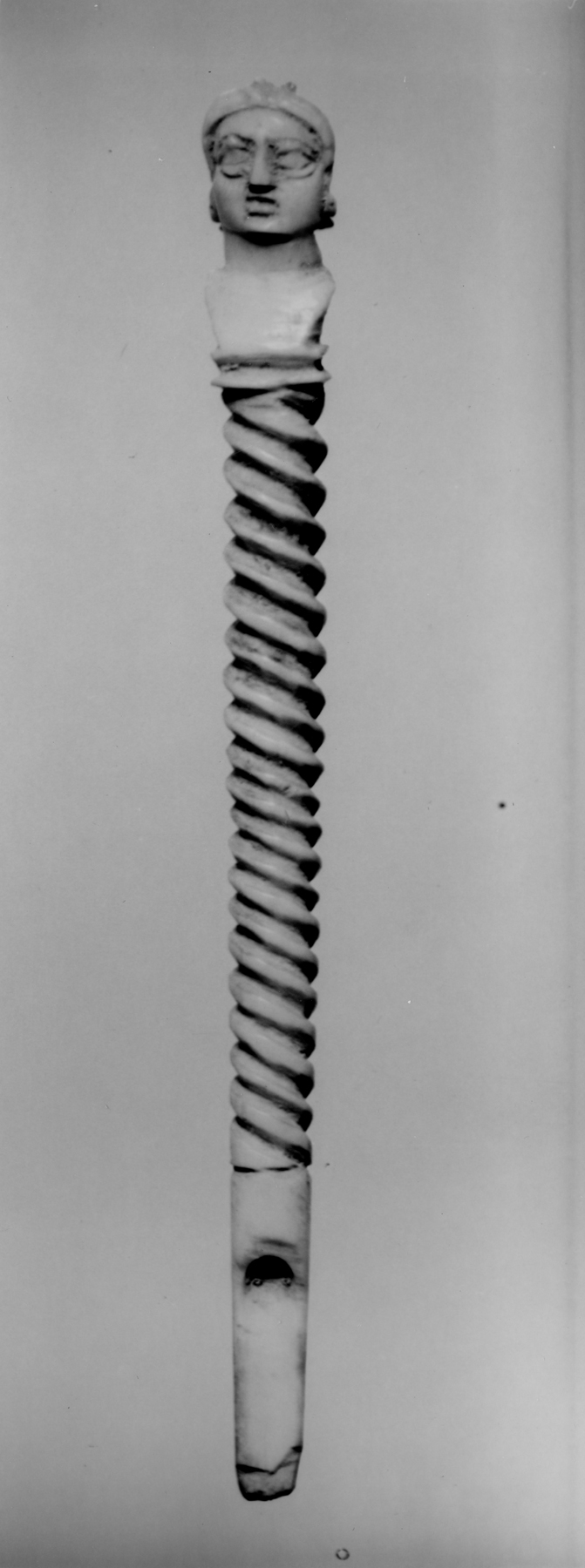Stylus Terminating in a Male Bust
(Roman Empire )
The shaft of the stylus (a writing implement) is carved with an uneven spiral and terminates in a flattened male bust. The head of the bust has large staring eyes, and the hair is arranged with a part in the center, emphasized by two rising locks or curls. The hair falls in back to the neck, where it is squared off. Although this hairstyle does not appear in emperor or patrician portraits, it does occur on members of the Roman crowd viewing the translation of relics on the early ivory of Pulcheria and Theodosius II at Trier. The scene has recently been related to the events of 421, though the ivory could be somewhat later.
The point of the stylus is broken.
Provenance
Provenance (from the French provenir, 'to come from/forth') is the chronology of the ownership, custody, or location of a historical object. Learn more about provenance at the Walters.
Don Marcello Massarenti Collection, Rome [cat. no. 64]; Henry Walters, Baltimore, 1902, by purchase; Walters Art Museum, 1931, by bequest.
Exhibitions
| 1989 | The Carver's Art: Medieval Sculpture in Ivory, Bone and Horn. Jane Voorhees Zimmerli Art Museum, New Brunswick. |
Geographies
Roman Empire (Place of Origin)
Measurements
H: 3 15/16 in. (10 cm)
Credit Line
Acquired by Henry Walters with the Massarenti Collection, 1902
Location in Museum
Not on view
Accession Number
In libraries, galleries, museums, and archives, an accession number is a unique identifier assigned to each object in the collection.
In libraries, galleries, museums, and archives, an accession number is a unique identifier assigned to each object in the collection.
71.628


